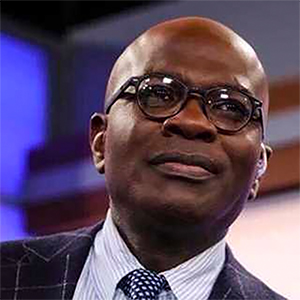Mark Gongloff: You know who believes in climate change? The stock market
Published in Op Eds
There’s an old climate joke that goes, “You may not believe in climate change, but your insurance company does.” If you’re in the market for new environmental humor — and really, who isn’t? — you can now update this to say, “You may not believe in climate change, but the stock market does.”
For much of this year, the S&P Global Clean Energy Index has outpaced the S&P 500 Index, the Nasdaq 100 Index and the MSCI World Index, Bloomberg News noted recently as part of a report about Jefferies analysts unexpectedly declaring these the “glory days” for green tech.
Anyone who’s been following the news would be forgiven for assuming these are not salad days for clean energy. Dog-food days, more like it. Whatever-this-is days. The White House and an eager Congress have shredded environmental regulations and cleantech subsidies, thrown up roadblocks to new wind and solar projects and generally tried to make life as comfortable as possible for the fossil-fuel industry currently running the government and as uncomfortable as possible for that industry’s upstart rivals.
And yet! Those same clean-energy sources that have been banished to America’s political wilderness are also in hot demand at home and around the world, thanks in part to President Donald Trump’s determination to put energy-hungry AI everywhere all at once.
As Bloomberg News notes, many of the stocks leading the boom in the S&P clean-energy index also have ties to the boom in AI. In other words, this may not be entirely a bet on a net-zero future but partly people seeing a gold rush and buying shovel makers. If the robot-industrial complex is a bubble just waiting to pop, then green tech’s lofty roost could be precarious.
Then again, both the S&P and the Nasdaq 100 also look like AI-rich souffles these days, making cleantech’s outperformance all the more notable. While the use case for AI is still in flux — will it save humanity or just stupefy it with slop? — the need for reliable energy has been clear for centuries.
And other stocks related to climate change are also beating the broader market. Bloomberg’s Prepare and Repair Index, made up of companies that benefit from the rise in expensive climate-fueled disasters, has absolutely trounced the S&P over the past five years, more than doubling its return, Bloomberg Green noted recently. These are almost the opposite of AI stocks: stuff like hardware stores, insurers and waste managers.
The clean-energy and prepare-repair indexes represent two sides of the climate-change coin: mitigation and adaptation. Though billionaire Bill Gates has somewhat fatalistically suggested the world lean into the latter, he is also still investing money in the former. His Breakthrough Energy Ventures is part of a group of more than a dozen venture capitalists, called the All Aboard Coalition, trying to raise $300 million to invest in clean tech. Investors pumped $56 billion into such companies in the first three quarters of 2025, more than in all of 2024, according to BloombergNEF.
For every dollar lost to climate disasters last year, $1.47 was invested in the energy transition that will help prevent future damage, according to BNEF. Two decades ago, just 12 cents were spent for each dollar lost to climate disasters.
Total global investment in the energy transition from planet-heating fossil fuels hit $2.1 trillion last year, according to BNEF, a record that could be broken this year. Investments in wind, solar and other renewable-energy sources alone hit a record $386 billion in the first half of 2025, with a 36% pullback in the U.S. from the second half of 2024 more than offset by a 63% jump in Europe.
Mainland China, meanwhile, has accounted for half of the world’s investment in renewables so far this year. As much as Trump crows about energy dominance, his crusade against wind and solar is ceding global energy dominance to China, and geopolitical influence along with it. While Gates muses about raising living standards in developing Africa with AI-enabled phones and GMO seeds, China is already doing it with inexpensive solar panels.
It behooves me to point out that coal-mining stocks have also boomed in the past five years. For all its green spending, China still relies too much on coal and shows no sign of losing its appetite. But the costs of running coal power plants keep rising, while solar and wind get cheaper.
Little wonder that, for the first time ever, renewables generated more of the world’s electricity than coal in the first half of 2025, according to the think tank Ember. If climate concerns aren’t enough to kill coal in the long run, then economics will.
Niall Smith, a quantitative researcher at Bloomberg, recently split some risk-premium atoms and discovered that companies with higher climate exposure also had higher capital costs. This may not be as splashy as the index charts above, but it’s still more evidence that, for all the climate-change denialism in our discourse these days, markets are still grounded in reality.
_____
This column reflects the personal views of the author and does not necessarily reflect the opinion of the editorial board or Bloomberg LP and its owners.
Mark Gongloff is a Bloomberg Opinion editor and columnist covering climate change. He previously worked for Fortune.com, the Huffington Post and the Wall Street Journal.
©2025 Bloomberg L.P. Visit bloomberg.com/opinion. Distributed by Tribune Content Agency, LLC.
























































Comments